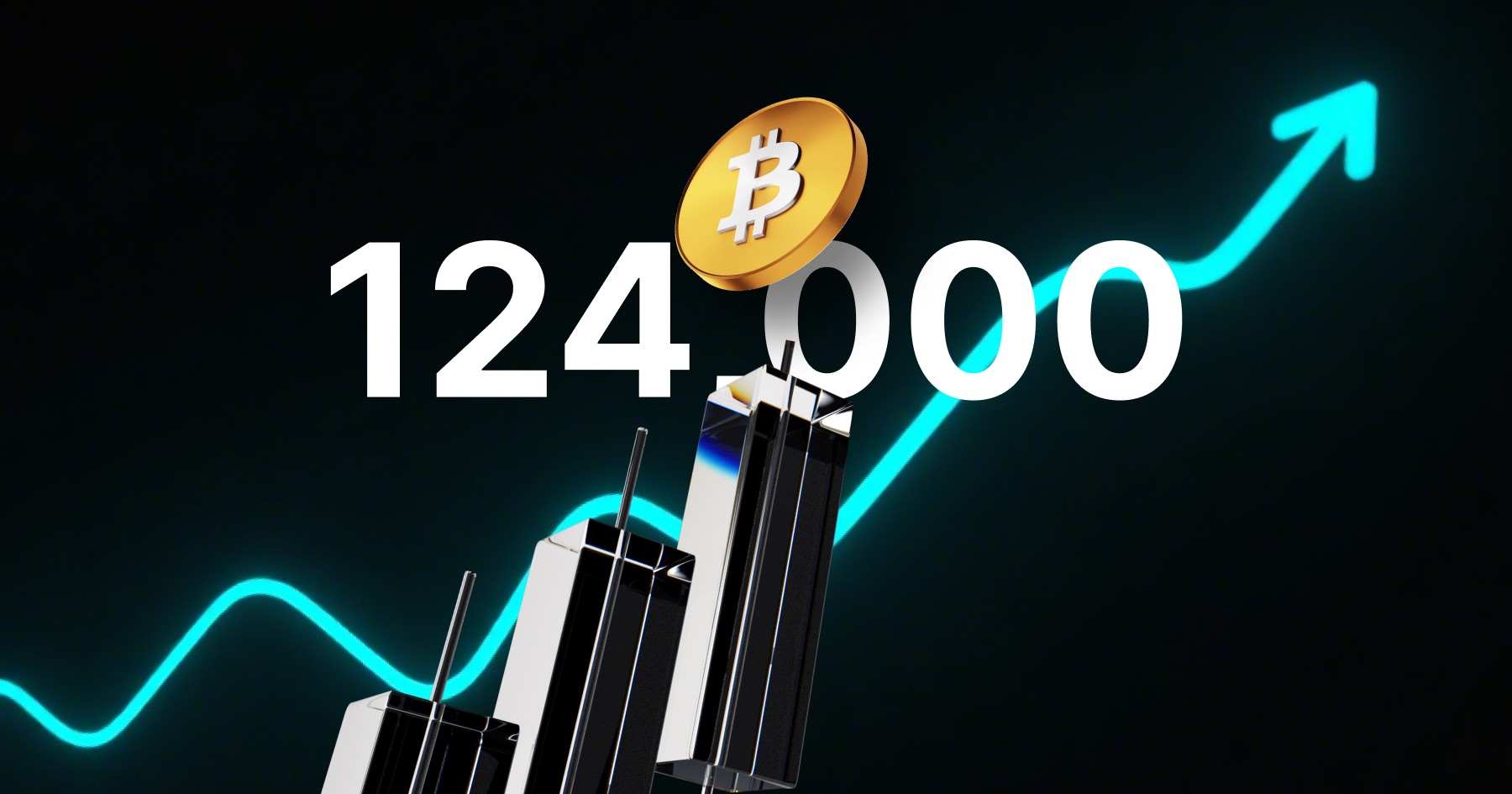
A Compendium of Crypto Important Milestones: Becoming an Integral Part of the Global Economy
From Bitcoin's humble beginnings during the 2008 financial crisis to its new all-time high at $19,700 in 2018, cryptocurrencies have become the fastest-growing and best-performing asset class of the decade. Countless criticisms later, the crypto market has proven it's here to stay. Finally recognized as a new asset class worldwide, cryptocurrencies are becoming integral to the global financial system. Obviously, much more work remains to be done, but the whole journey has been impactful and completely astounding!

2000s-2025 Key Milestones
The 2000s: The Inception of Bitcoin
● 2008-2009: Bitcoin Network
● 2010: Bitcoin Pizza Day
2011-2014: The First of Everything Else
● 2011: The First Altcoins
● 2012: Bitcoin First Halving
● 2013: The First ICO
● 2014: The First NFT and Stablecoins
2015-2018: The Rise of Cryptocurrencies
● 2015: The Origin of Ethereum
● 2016: The DAO Hack
● 2017: The Year of ICOs
● 2018: The First Bitcoin’s All-Time High at $19,700
2019-2025: Becoming an Integral Part of the Global Economy
● 2019: Scalin’ Time! Bitcoin reached 400M transactions
● 2020: Black Thursday, but DeFi TVL surpassed $10B
● 2021: The Bloom of DeFi-NFT-Metaverse, Bitcoin approached $70,000
● 2022: THE Crypto Crash; Ethereum has changed into PoS
● 2023: More Regulatory Clarity
● 2024: The Year of the ETFs; Bitcoin broke the $100,000 mark
● 2025 (through August): From Viability to Ubiquity; Bitcoin surpassed $124,000
You are reading the second part of the story. Read the full story here .
2020: DeFi Summer and Black Thursday
Compound's yield farming kickstarted a DeFi boom in mid-2020, with protocols like Yearn, Uniswap, and SushiSwap driving Total Value Locked from under $1B to over $10B by year-end. High yields and new governance tokens spurred a frenzy, albeit with smart contract risks. The Ethereum Beacon Chain (Phase 0 of Ethereum 2.0 a.k.a. Ethereum PoS) launched on December 1, introducing proof-of-stake to Ethereum. Over 524,000 ETH were staked to activate the upgrade, beginning Ethereum's multi-year transition from PoW, slightly later than early projections.
Meanwhile, the Black Thursday crash in March 2020 underscored crypto's resilience. Amid COVID-19 panic, Bitcoin plunged by 50% on March 12, with ETH similarly crashing and liquidating billions in positions. This extreme volatility (dubbed Black Thursday) shocked markets but was followed by a swift recovery that never looked back to the $5,330 level. Institutions began flocking to Bitcoin for the "digital gold" narrative, with MicroStrategy becoming the first corporation to hold a BTC treasury of 21,454 BTC at that time.
2021: The NFT Mania
In February 2021, Tesla followed suit by disclosing a $1.5 billion Bitcoin purchase and announcing plans to accept BTC payments, validating crypto as a corporate treasury asset. Then Coinbase (COIN) went public via direct listing on NASDAQ at an $86 billion valuation as the first major crypto exchange to have an IPO. These were definitely the main drivers behind Bitcoin's ATH at $64,863 in April.
The main theme of the year was NFTs, with an NFT artwork by digital artist Beeple selling for $69.3 million at Christie's. This marked the beginning of NFTs' explosion into the mainstream, alongside big names like CryptoPunks and Bored Apes. On a side note, the world saw the biggest bet of all time as El Salvador passed a law to adopt Bitcoin as legal tender—the first Bitcoin adoption at the nation-state level ever.

Bored Ape Yacht Club historical best sales on OpenSea. Source: OpenSea
In November 2021, Bitcoin peaked once more at $68,790 and Ethereum at $4,892. Both contributed to the new ATH of the total crypto market cap, which surpassed the $3T mark for the first time in history and marked the peak of the 2020-21 bull cycle.
2022: THE Crypto Crash
In March 2022, a group of hackers named Lazarus Group exploited the Ronin Network (Axie Infinity's sidechain) and stole approximately $625 million in ETH/USDC. This theft—one of the largest in crypto history—rattled the GameFi sector and prompted deeper scrutiny of bridge security.
Then in May, Terra (LUNA) collapsed from a $16 billion market cap as its algorithmic stablecoin TerraUSD depegged and crashed into cents, wiping out the LUNA (now LUNC) token's value. This collapse vaporized approximately $40-50 billion in market value and triggered a broader crypto credit crisis.
Both events shook CeFi to its core, causing sector contagion in June, July, and August 2022. Major crypto lenders and funds filed for bankruptcy , from Celsius and Three Arrows Capital to Voyager.
Taking the biggest hit was FTX . The exchange's collapse was triggered by a liquidity crisis after reports revealed its close ties to Alameda Research, which had been seriously affected by the bloodbath in H1 2022. When customers rushed to withdraw funds, FTX couldn't cover demands because it had secretly lent billions in user deposits to Alameda for speculative bets. The exchange quickly collapsed, leading to bankruptcy, regulatory scrutiny, and the arrest of CEO Sam Bankman-Fried for fraud.
Amid this turmoil, many overlooked that the Ethereum Merge took place, where the chain finally switched to Proof-of-Stake consensus. Ethereum's energy usage was reduced by 99.9% consequently, and Ethereum's roadmap then turned to scaling.

Ethereum consensus has changed into PoS since 2022. Source: Ethereum Energy Consumption
2023: More Regulatory Clarity
March 2023 brought banking turmoil and a depeg: Silvergate Bank and Signature Bank (crypto-friendly U.S. banks) collapsed amid wider bank failures. Circle's USDC stablecoin briefly depegged to $0.88 when $3.3B of its reserves were stuck in Silicon Valley Bank, though it recovered after U.S. regulators backstopped SVB.
The EU Parliament approved MiCA (Markets in Crypto-Assets regulation) on April 20, establishing a landmark regulatory framework across EU states. MiCA set licensing, reserve, and disclosure standards—the first such comprehensive regime globally. Its stablecoin rules took effect in June 2024, with wider provisions following in December 2024.
In the U.S., it was all about legal disputes. The SEC charged Binance (June 5) and Coinbase (June 6) with operating unregistered exchanges and offering unregistered securities, but suffered defeats against Grayscale and Ripple. On August 29, the D.C. Circuit Court vacated the SEC's rejection of Grayscale's spot Bitcoin ETF application, calling the denial "arbitrary and capricious." This legal victory raised confidence that a U.S. spot Bitcoin ETF would finally be approved—a dramatic reversal after years of SEC refusals. Indeed, the ruling set the stage for imminent approvals in 2024. One month earlier, a federal judge ruled that XRP sales on public exchanges were not securities, which was a partial win for Ripple.
2024: Spot Bitcoin ETFs on Wall Street + Bitcoin Halving = $100K
In a landmark shift, the SEC on January 10 approved the listing of 13 spot Bitcoin ETFs (after a court loss and years of industry lobbying). Firms like BlackRock and Fidelity launched ETFs , finally giving U.S. investors direct Bitcoin funds right in the first few days of the year. In the first few days of H2, the first U.S. spot Ether ETFs made their debut quite unexpectedly, signaling a more muted investor reception than Bitcoin.
While March 2024 was Ethereum's showtime with its Dencun upgrade to reduce L2 fees, all eyes were on April with the 4th Bitcoin halving at block #840,000. Bitcoin's block reward fell from 6.25 to 3.125 BTC, again showcasing Bitcoin's programmed scarcity.

The EU's MiCA regulation kicked in for stablecoin issuers on June 30, 2024, with full scope for exchanges and other crypto services by January 2025. By the end of 2024, MiCA's regulations became fully applicable across the EU, covering all crypto asset service providers. Industry observers noted increased compliance costs but also greater institutional confidence in EU markets.
In November 2024, Trump won the U.S. Election and brought the promise of "making crypto great again" to the White House, giving crypto early adopters high hopes for the industry's price growth. Bitcoin reached its 6-figure ATH for the first time in December.
2025 (Through August): BTC $124K
Facing tepid uptake of its PayPal USD (PYUSD) stablecoin, PayPal announced a 3.7% yield incentive for holders in April 2025, when PYUSD's circulation was about $868 million. Then, in the wake of U.S. elections and agency changes, the SEC not only withdrew its lawsuits against major exchanges Binance, Coinbase, and Kraken, but also its appeal against Ripple. This reversal suggested a more industry-friendly approach, validating speculation that a political shift could soften crypto regulation.
In July, the U.S. Congress passed the GENIUS Act, the first U.S. federal framework for payment of stablecoins. Major banks and large retailers/tech firms signaled plans to issue or partner on USD stablecoins. Around the same time, Bitcoin suddenly hit $123,092 on July 14, before reaching a new all-time high of $124,000 on August 14.

Bitcoin has flipped Alphabet (Google) to be the 5th largest asset by market cap (as of August 14, 2025). Source: Companies Market Cap
Conclusion
From Bitcoin's humble beginnings during the 2008 financial crisis to reaching $124,496 in 2025, the cryptocurrency ecosystem has evolved from an experimental digital currency into a legitimate asset class that commands respect from institutions, governments, and retail investors alike. The journey has been marked by spectacular highs and devastating crashes, regulatory uncertainty and landmark approvals, as well as technological breakthroughs and security failures.
What stands out most remarkably is crypto's resilience. Each crisis, from Mt. Gox to FTX, initially appeared to threaten the entire ecosystem, yet the market consistently emerged stronger and more mature. The infrastructure has become more robust, prompting clearer regulations, both of which have encouraged broader institutional participation. Bitcoin ETFs on Wall Street, El Salvador's legal tender adoption, and comprehensive regulatory frameworks like MiCA demonstrate that cryptocurrencies have transcended their early reputation as speculative instruments for tech enthusiasts.
Looking ahead, the foundation has been laid for even greater integration into the global financial system. With major corporations holding Bitcoin on their balance sheets, traditional banks offering crypto services, and governments developing digital currencies, the question is no longer whether cryptocurrencies will survive, but how they will continue to reshape finance, technology, and society in the decades to come. The first decade was about proving viability; the next will be about defining the future of money itself.
You are reading the second part of the story. Read the full story here.
Create an account on Bitget to trade BTC, ETH, and other cryptos today!
Disclaimer: The opinions expressed in this article are for informational purposes only. This article does not constitute an endorsement of any of the products and services discussed or investment, financial, or trading advice. Qualified professionals should be consulted prior to making financial decisions.

- Will Ethereum Break to New Highs?2025-08-15 | 5m


